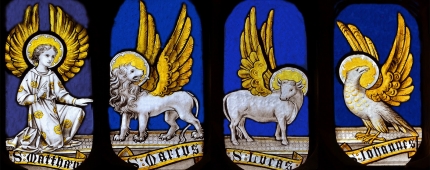Philippians 4:5—Is the Lord’s coming at hand or far off?
Problem: According to this passage, “The Lord is at hand” (cf. 1 Peter 4:7). However, other passages portray Christ’s coming as not being immediate, but as having intervening events. “For that Day will not come,” writes Paul, “unless the falling away comes first” (2 Thes. 2:3).
Solution: Bible scholars respond to this problem in two different ways, depending on their view of future things (eschatology).
Non-imminent View. Those who believe Christ’s coming is not imminent take the verses that speak of it as “at hand” as only general descriptions, but not specific time frames. They note that the “last days” includes the whole period of time between Christ’s first and second comings (cf. Heb. 1:1; 1 John 2:18). Thus, they see no difficulty with passages (like 2 Thes. 2:3) that speak of some events that must occur first before Christ can return. That is, they believe that it is true in a generalsense that “the Lord is at hand,” but deny that this means that He could literally come at any moment. Some specific events, like the “falling away,” must come first before Christ will actually return.
Imminent View. Other Bible scholars, including the authors, take the verses declaring that Christ’s coming is “at hand” (Phil. 4:5; cf. 1 Peter 4:7) literally. They claim that otherwise it could not be “the blessed hope” spoken of by Paul (Titus 2:13), nor the purifying hope by John (1 John 3:2–3). Further, why should the believer be exhorted to “watch” for it and not to be taken by surprise (cf. 1 Thes. 5:1–2). In addition, they believe that if there were discernable signs and events that must occur before Christ returns for believers, then we could know “the day and hour” (Matt. 24:36) or “times or seasons” (Acts 1:7) which Christ said we cannot know.
According to this view, then, when the Bible speaks of Christ’s return as a sign-less, imminent event that could happen at any moment, it is speaking about Christ’s coming in the air for His saints before the tribulation (i.e., the rapture of 1 Thes. 4:13–18). And when the Scriptures talk about signs and events that must occur before the coming of Christ, it is referring to His coming with His saints to earth after the tribulation (Matt. 24:29–30).
The two aspects of Christ’s return can be diagramed in this manner:
See All Problems
This excerpt is from When Critics Ask: A Popular Handbook on Bible Difficulties (Wheaton, Ill.: Victor Books, 1992). © 2014 Norman Geisler and Thomas Howe. All rights reserved. Used by permission. Click here to purchase this book.














